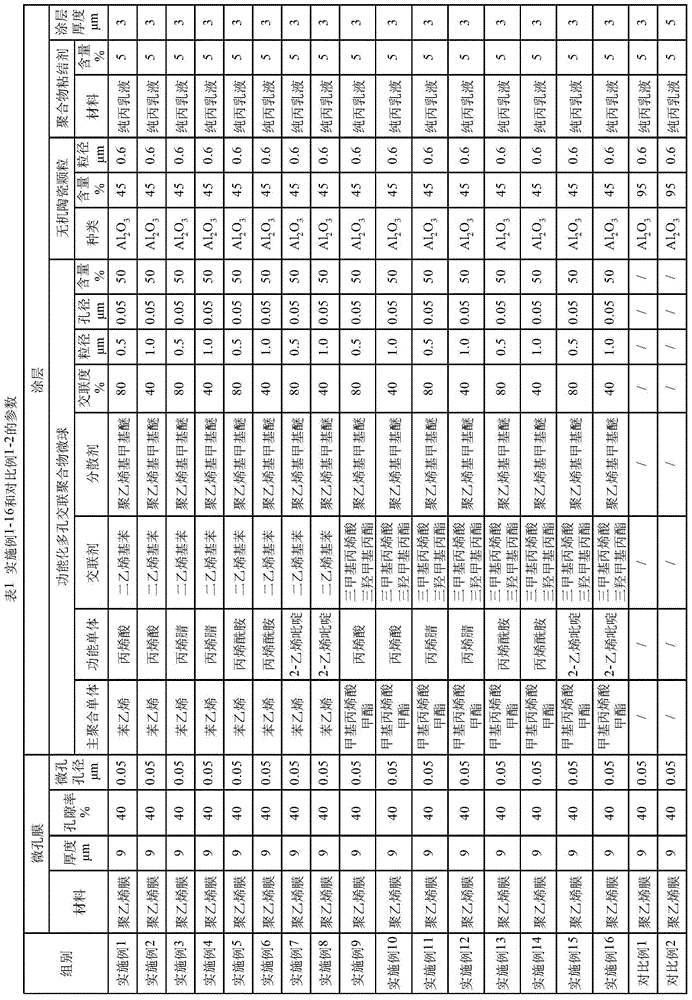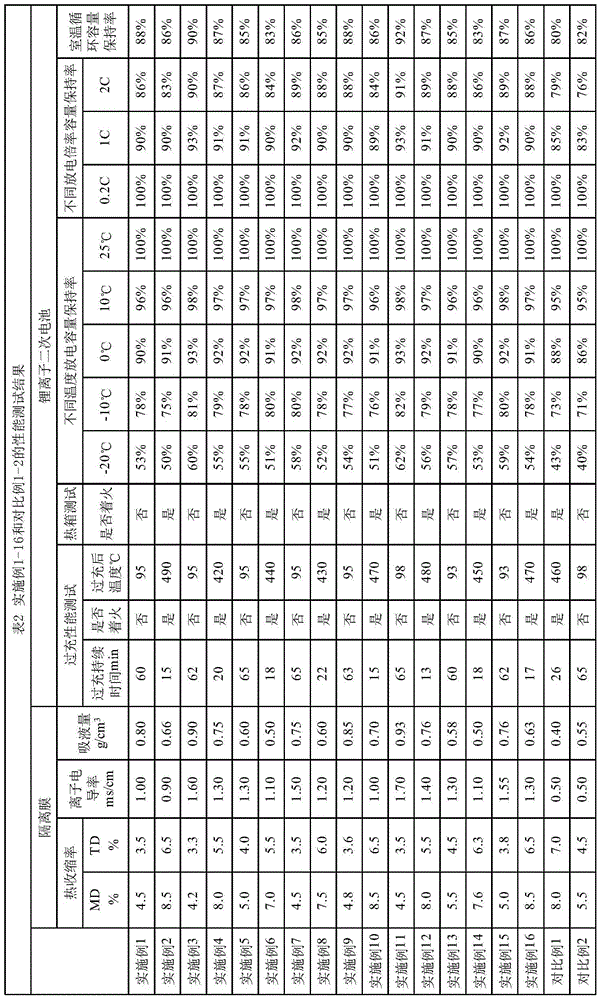Isolation membrane and lithium ion secondary battery
A technology of separator and microporous membrane, which is applied in secondary batteries, battery pack components, circuits, etc., can solve the problem that cannot meet the high kinetic performance and long cycle life of lithium ion secondary batteries, and the electrolyte liquid retention performance is increased. limited and other problems, to achieve the effect of improving ionic conductivity, good safety performance, and high ionic conductivity
- Summary
- Abstract
- Description
- Claims
- Application Information
AI Technical Summary
Problems solved by technology
Method used
Image
Examples
preparation example Construction
[0029] The method for preparing a separator according to the second aspect of the present invention is used to prepare the separator described in the first aspect of the present invention, comprising the steps of: combining functionalized porous cross-linked polymer microspheres, inorganic ceramic particles and a polymer binder It is added into a solvent and stirred to form a coating slurry; the coating slurry is coated on at least one surface of the microporous membrane, and the isolation membrane is obtained after drying.
[0030] The preparation method of the isolation film according to the second aspect of the present invention is simple and easy to realize industrial production.
[0031] In the method for preparing a separator according to the second aspect of the present invention, the solvent may be deionized water. Using deionized water as a solvent is not only safe and environmentally friendly, but also can reduce production costs.
[0032] In the method for preparin...
Embodiment 1
[0037] 1. Preparation of Isolation Membrane
[0038] (1) The main polymerization monomer styrene, the functional monomer acrylic acid, the crosslinking agent divinylbenzene and the dispersant polyvinyl methyl ether are polymerized at a mass ratio of 12:4:4:4 to obtain a particle size of 0.5 μm, functionalized porous cross-linked polymer microspheres with a cross-linking degree of 80% and a pore size of 0.05 μm;
[0039] (2) Functionalized porous cross-linked polymer microspheres and inorganic ceramic particles with a particle size of 0.6 μm 2 o 3 And the pure acrylic emulsion of the polymer binder is added to the solvent deionized water in a mass ratio of 50:45:5, and stirred evenly to make a coating slurry;
[0040] (3) Coating the coating slurry on both surfaces of a microporous polyethylene film with a thickness of 9 μm, a micropore diameter of 0.05 μm, and a porosity of 40% by gravure printing, and obtained a strip after drying. A coated separator, wherein the thickness...
Embodiment 2
[0048] Lithium-ion secondary batteries were prepared according to the method of Example 1, except for the following differences:
[0049] 1. Preparation of Isolation Membrane
[0050] (1) The main polymerization monomer styrene, the functional monomer acrylic acid, the crosslinking agent divinylbenzene and the dispersant polyvinyl methyl ether are polymerized at a mass ratio of 12:4:2:2 to obtain a particle size of 1.0 μm, functionalized porous cross-linked polymer microspheres with a cross-linking degree of 40% and a pore size of 0.05 μm.
PUM
| Property | Measurement | Unit |
|---|---|---|
| particle diameter | aaaaa | aaaaa |
| pore size | aaaaa | aaaaa |
| pore size | aaaaa | aaaaa |
Abstract
Description
Claims
Application Information
 Login to View More
Login to View More - R&D
- Intellectual Property
- Life Sciences
- Materials
- Tech Scout
- Unparalleled Data Quality
- Higher Quality Content
- 60% Fewer Hallucinations
Browse by: Latest US Patents, China's latest patents, Technical Efficacy Thesaurus, Application Domain, Technology Topic, Popular Technical Reports.
© 2025 PatSnap. All rights reserved.Legal|Privacy policy|Modern Slavery Act Transparency Statement|Sitemap|About US| Contact US: help@patsnap.com


